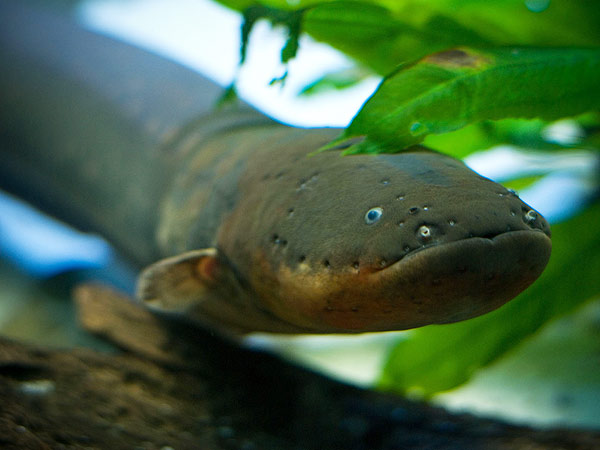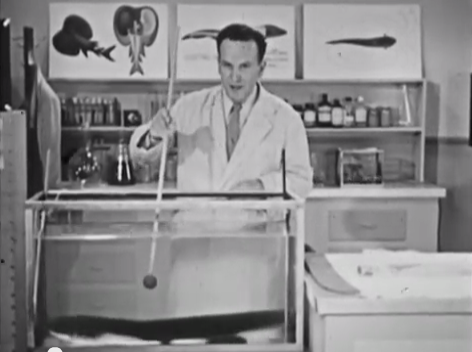Site specific installation-performance, for the toy library-space (auditorium) of the Eni Village of Borca.

Concept:
The project involves the installation at the centre of the hall a transparent tank containing one or more electric eels.
The electrophorus, or electric eel, is able to emit electric charges up to 500v, the most powerful produced by a living being – we don’t like half measures.
It is, other than a way of communicating and engaging with the environment, also a feared defense and offense weapon against preys, which thus stunned are more easily devoured, raw, obviously.
through two electrodes, it will be possible, as it has been largely documented, to engage the electric potential flowing out of the eel to turn on six lighting points opportunely placed in the hall in question, which isn’t currently provided with a workable electrical system.
Almost a ritual set up, purposefully evocative: we’re in the belly of the six-legged dog, we’re almost like living fossils in its stomach.
The produced charges will be amplified, creating variations of sound in the environment together with those of brightness. We could therefore witness the manifestation of a single auditory and luminous vibration corresponding to the trend of variation in potential produced by the animal through its electricity-generating organs.

This irregular intermittence will evoke, akin to a mountain storm, the pulsating life of the eel. Almost an allegory of Tesla’s experiments.
A further amplification of the phenomenon will develop through the Internet, by the remote transmission of the signal produced by the eel. Thus, it will be possible to utilize the coded and streamed signal to control to one’s liking a few synthesizers and lights in an exhibitive space in Berlin, giving life, this way, to a strategic and performative resonance of what’s happening in the Eni Village of Borca.
This aspect is aesthetically closer to the most recent scientific perspectives, which consist of experiments in the transmission of electrical signals between human brains.
In a broader meaning we’d like to instead refer to the production of energy by a living element, as opposed to the one derived by fossil elements like gas or petroleum.
Scientific documentation:
Electric Eel : Moody Institute of Science. (1954 Educational Film)
Plos one: Conscious Brain-to-Brain Communication in Humans Using Non-Invasive Technologies
This is a project by Giovanni De Donà




